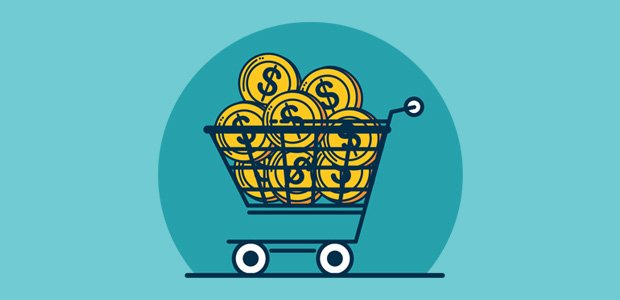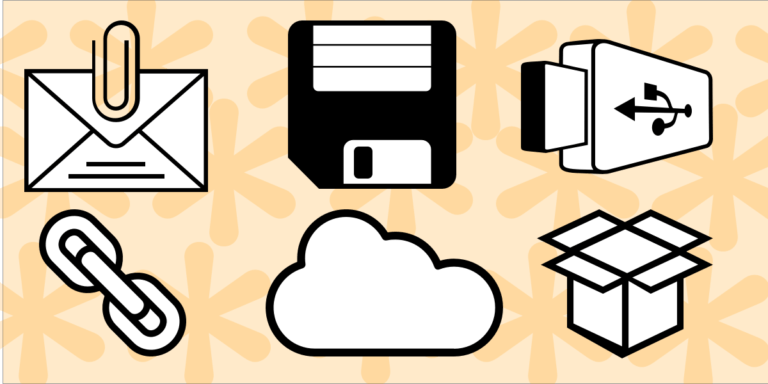Imagine that you worked as a cashier in a department store. Throughout the day, you watch as customer after customer came up to the register with a shopping cart full of merchandise only to abandon the cart and walk away. You would undoubtedly wonder what in the world was going on.
In the real world, when customers approach the cash register with a cart full of merchandise, it’s because they have selected what they want and are ready to purchase. The only reason they might walk away is if an emergency arises, the lines are just too long, or they forgot their money.


In the world of e-commerce, shopping cart abandonment is not uncommon. Customers add items to their website shopping cart and then navigate away before they finish their transaction. According to the Baymard’s report, 50% of the online shoppers abandoned their carts because the extra costs were too high. In March 2020 alone the average shopping cart abandonment rate was at around 88 percent. This means that a little less than 9 out of every 10 customers walk away before they buy something. This is a problem that web designers, especially the ones that are specialized in UX design, are trying to solve.
Realistically, you have likely abandoned a shopping cart before hitting the pay button. Shopping cart abandonment is not a problem that can be completely resolved. However, it is possible for e-commerce stores to improve the experience of their clients, lowering the amount of shopping cart abandonment they experience.
Let’s look at four tested methods that can reduce your website’s shopping cart abandonment rate.
How Big of a Problem Is It Really?
Table of Contents
Before identifying ways to reduce shopping cart abandonment, it’s good to get a picture of just how prevalent the problem is.
/*div{padding-right:0!important;padding-bottom:10px}.ml-form-formContent.horozintalForm .ml-button-horizontal{width:100%!important}.ml-form-formContent.horozintalForm .ml-button-horizontal.labelsOn{padding-top:0!important}}
/*]]>*/
/**/
![]()
![]()
- Abandonment rates for the travel sector are worse than any other e-commerce sector. Around 85 percent of people put something travel related in their cart and then walk away.
- The conversion rates for shoppers on a desktop are higher, at 13 percent, than those of mobile users, at around 8.5 percent.
- The weekends are worse for shopping cart abandonment rates, reaching as high as almost 80 percent.


1. Avoid Cash Register Shock
Price is a factor that prevents customers from completing their buying process. Most customers, especially now during the COVID-19 pandemic, are on a budget and they’re tracking their expenses using tools for scanning receipts or by having their own financial diaries, meaning they’re only buying what’s absolutely necessary. They make their buying decisions based on how much the product they are going to purchase costs. They have done their due diligence and have compared prices.
It can dishearten customers like this to get to the end of the buying process only to see that the price of the product they want to purchase has increased drastically when shipping, taxes, and fees are added on. For this reason, show customers their subtotal as soon as possible.
Use sidebars or a space on the top of the screen to give your customers an accurate running total. Also, if there are discounts available, make them prominent. The last thing you want is your customer to abandon your page, look for a promo code on a different page, and then get redirected somewhere else to make the sale.
2. Offer Free Shipping
Free shipping is one of the best ways to minimize shopping cart abandonment rates. Amazon, especially with Amazon Prime, has changed what people expect from shipping. Most customers will not buy if your store does not offer them free shipping.
Many times, the cost of shipping a product is more expensive than the product they want to purchase. No one in their right mind is going to do that. There is a psychological factor to this. A high shipping fee triggers something in the mind of some customers, especially those who were not 100 percent sure they needed the product they are going to purchase, that tells them it is time to walk away from the deal.
Some customers have no problem paying for shipping. However, make sure that your shipping policies and fees are on clear display.
3. Make Paying Easy
If a customer, especially a customer visiting your site for the first time, is required to create an account before they can pay, they might navigate away. For many customers, it can seem like a betrayal being asked to create an account after they have already gone through the process of selecting the items they want and putting them into the cart. You might incentivize customers to create a login, but this is something that you should do upfront. It should not be a condition of their making a purchase.
You can make payment easy by offering multiple payment solutions. Remember, you want them to pay. That’s what it is all about. It can feel frustrating for customers to find products they love and then realize that you do not take their payment method. Your e-commerce store should take all the major forms of payment, including PayPal, Stripe, and credit cards.


4. Use an Exit Intent Strategy
Internet shoppers are looking for the best deals. They may add something to the cart but want to search around to find a better price before they pull the trigger. That’s why an exit intent strategy is beneficial.
An exit strategy is going to give your user something of value as they strive to leave your site. You might offer:
- Downloadable content
- Free shipping
- The chance to win prizes
Take into consideration what users are looking at and then create a strategy that can encourage them to stay. It’s unnecessary to have an exit pop-up on every page of your website. However, category pages, product pages, and checkout pages may benefit from this strategy.
When you have a sign that the user has searched your site for something in particular or that there is a likelihood they want to purchase something, an exit intent strategy can keep them on the page. Even if they navigate away, if you have their email information, why not send them more information or discounts on the products and services they were considering?
Conclusion
E-commerce has taken on greater importance because of COVID-19. Customers are making savvy decisions and want an e-commerce market that meets their needs. Make payment easy, use exit intent strategies, offer free shipping, and avoid cash register shock to minimize shopping cart abandonment.






